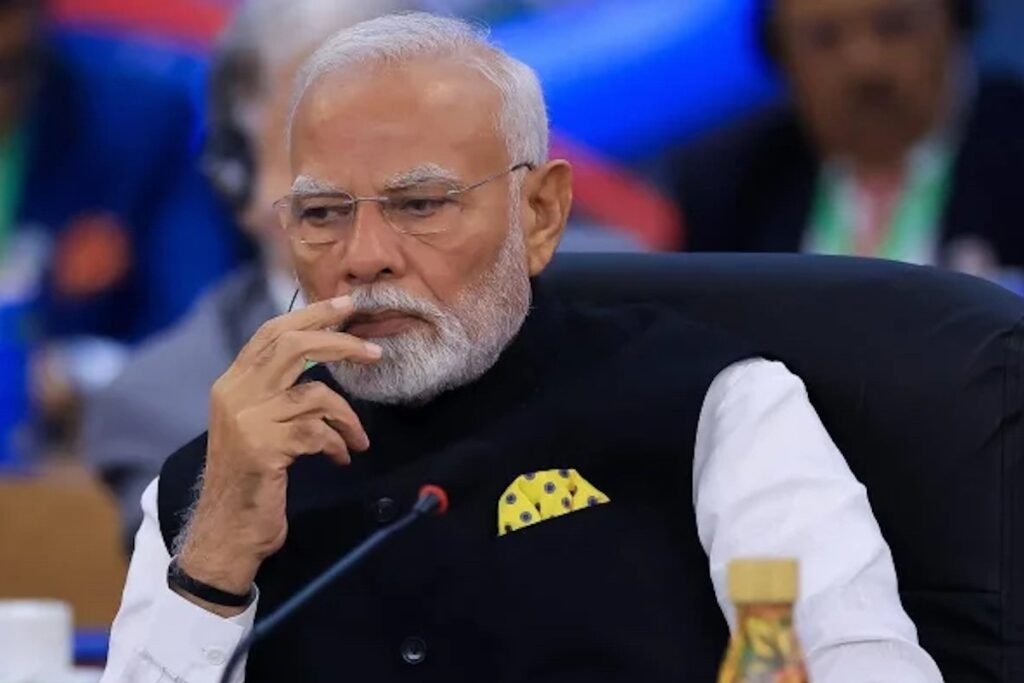When President Donald Trump hit Rosneft and Lukoil, Russia’s two largest oil companies, with sweeping sanctions on October 22, the message to Moscow was unmistakable: Washington was turning up the heat.
But the shockwaves reached far beyond Russia — landing squarely in New Delhi, one of Russia’s biggest oil customers and a key US partner in Asia.
Since the Ukraine war began, India has quietly emerged as one of Moscow’s biggest oil lifelines. Its imports of Russian crude have soared from under 100,000 barrels per day (bpd) in early 2022 to nearly 1.8 million bpd this year— a 17-fold surge.
The appeal is obvious. Russian crude is $10 to $20 cheaper per barrel than global benchmarks, saving India billions every quarter and helping keep fuel prices stable at home.
Indian refiners such as Reliance Industries, Indian Oil Corporation and Nayara Energy — partly-owned by Russian Rosneft — have built a profitable business of buying discounted Russian oil, refining it locally and exporting often to Europe.
That model now faces disruption because of US Treasury’s Executive Order 14024, which threatens to penalize any foreign company, bank, or insurer that continues dealing with Rosneft or Lukoil after November 21, effectively cutting violators off from US markets and the global banking system.
For energy traders and insurers, the threat is serious enough to force a rethink of Russian dealings.
Tariffs, trade and tension
The oil dispute is already spilling into broader trade politics. President Trump has warned he’ll keep “massive tariffs” on India until Russian oil imports stop. These tariffs, averaging 50%, are already biting India hard, with official data showing exports to the US fell more than 20% in September. Behind the scenes, both sides are trying to reach a compromise.
Washington and New Delhi are believed to be close to a deal that would lower US tariffs on Indian goods to 15–16%. Reports suggest that India could gradually scale back Russian oil purchases in exchange for tariff relief, allowing Trump to claim a diplomatic win while giving Modi space to manage domestic fallout.
Despite Trump’s repeated claims of Indian commitment, there’s no official confirmation from India so far. At the Berlin Global Dialogue, Indian Commerce Minister Piyush Goyal struck a defiant tone, saying India “won’t do any deal in a hurry or with a gun to our head.”
His comments capture the essence of India’s domestic mood: it will decide on its own terms, not under pressure from Washington.
Analysts expect India may eventually reduce Russian imports by 30–40%, roughly 500,000 to 700,000 barrels a day under increasing US pressure, but doing so would come at a steep price. Replacing those barrels with costlier Middle Eastern crude could add $1 to $1.5 billion per month to India’s import bill, weaken the rupee and widen its current-account deficit.
Banking exposure is another risk. Indian banks handling rupee-ruble and dirham-ruble payments may find themselves under US scrutiny. Roughly $5-7 billion in annual oil-related payments could be disrupted, forcing banks to route transactions through opaque intermediaries— a costly and risky workaround.
New game: oil for arms?
Yet as the oil trade comes under pressure from Washington, New Delhi appears to be quietly strengthening another link with Moscow — defense.
Reports suggest India is preparing to sign a $1.2 billion deal for additional S-400 air-defense systems. With Moscow’s oil revenues squeezed by sanctions, fresh arms purchases serve as both financial relief for Russia and strategic reassurance that the relationship endures beyond hydrocarbons.
For India, the logic is equally clear. With about 45% of India’s military hardware — from submarines and fighter jets to missile systems — still sourced from Moscow, a clean break is neither realistic nor desirable. Even as it diversifies toward Western suppliers, India’s armed forces remain tied to Russian maintenance and spare parts, giving the Kremlin leverage over Washington.
India’s next move may hinge on what China does next. Beijing’s state oil firms — PetroChina, Sinopec and CNOOC — have apparently paused seaborne imports of Russian crude to avoid secondary sanctions. Yet it may use intermediaries to navigate sanctions once payment channels stabilize.
If China does so — as many expect — India may quietly follow suit. It could use non-dollar settlements or third-country intermediaries to keep Russian oil flowing without openly defying Washington. For now, Indian refiners appear to be playing for time, winding down visible transactions while keeping options open for future resupply.
Breaking balancing act
Compliance with US sanctions would not come cheaply. Yet, defying Washington also risks deeper tariffs, trade friction and reduced access to Western capital, especially at a time when they are nearing a long-stalled trade agreement.
The Modi government is trying to juggle multiple objectives — negotiating tariff relief, keeping energy prices stable and sustaining its defense partnership with Russia — all the while projecting strategic autonomy to domestic voters.
For decades, India has managed to balance between rival blocs — a founding BRICS member that’s also a US strategic partner in the Quad. But as Trump tightens enforcement and Putin leans on loyal buyers, that middle ground is narrowing. As both Russia and the US demand commitment, India may soon face the one choice it has long avoided: picking a side.
For now, Prime Minister Modi is trying to have it both ways — to remain Russia’s friend, America’s partner and the world’s indispensable swing state. Whether this balancing act can survive the pressure of economic coercion will shape not only the future of India’s foreign policy, but the contours of the next global order itself.
Ishaal Zehra is a freelance Pakistani journalist specializing in South Asia’s geopolitical and economic landscape. Her work focuses on the intersection of regional security and strategic realignments in South Asia, Central Asia and the Indian Ocean region.

